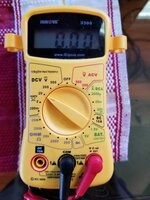Gionnirocket
Well-Known Unidentified Member
- Region
- USA
- City
- Y. O.
Yes... and your answer was in post #2Yes the photo was an example of a ac/brick/dc charger because ROAMERS asked about it -- it is an example of just one charger. It is for sale at amazon.
MThe one I have, as I have stated in the original post, does not have any markings (see pics)
Do you think anyone is going to magically know by looking at a connection with no markings?
